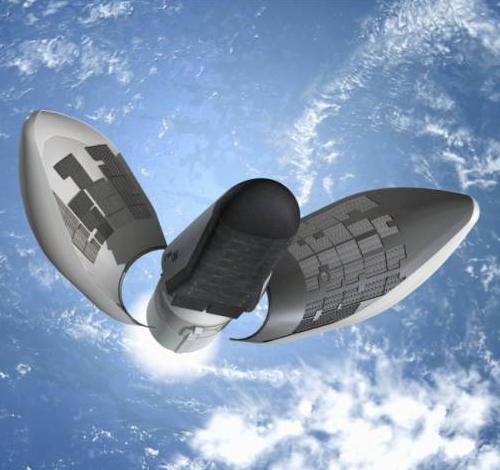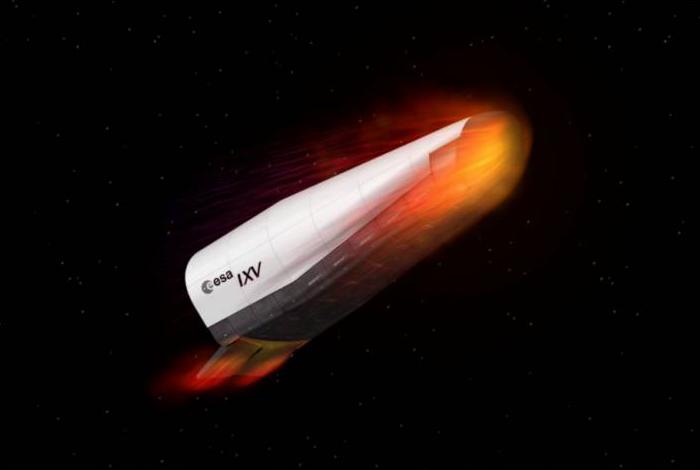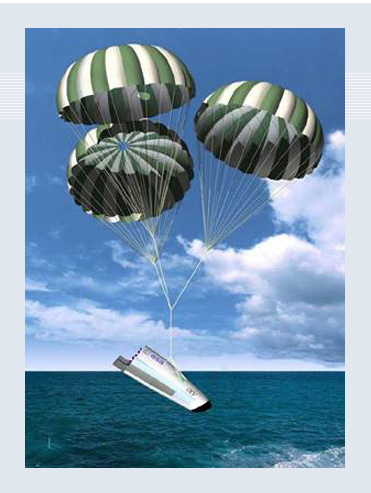ESA reentry vehicle on track for flight in 2013
ESA and Thales Alenia Space Italia announced an agreement today at the Paris Air & Space Show to begin building the IXV Intermediate eXperimental Vehicle for its mission into space in 2013.
Europe's ambition for a spacecraft to return autonomously from low orbit is a cornerstone for a wide range of space applications, including space transportation, exploration and robotic servicing of space infrastructure.
This goal will be achieved with IXV, which is the next step from the Atmospheric Reentry Demonstrator flight of 1998. More manoeuvrable and able to make precise landings, IXV is the 'intermediate' element of Europe's path to future developments with limited risks.
Launched into a suborbital trajectory on ESA's small Vega rocket from Europe's Spaceport in French Guiana, IXV will return to Earth as if from a low-orbit mission, to test and qualify new European critical reentry technologies such as advanced ceramic and ablative thermal protection.
>
"Thanks to this agreement, the IXV mission into space has become a near-term reality. Its success will provide Europe with valuable know-how on reentry systems and flight-proven technologies that are necessary to support the Agency's future ambitions, including return missions from low Earth orbit," says Giorgio Tumino, IXV Project Manager.
"In the long term, studies on the evolution of IXV will be consolidated and proposed to Member States, focusing on an affordable reusable craft for operating and servicing payloads in orbit before returning to touch down on land."
ESA and Thales Alenia Space Italia announced an agreement today at the Paris Air & Space Show to begin building the IXV Intermediate eXperimental Vehicle for its mission into space in 2013.
Europe's ambition for a spacecraft to return autonomously from low orbit is a cornerstone for a wide range of space applications, including space transportation, exploration and robotic servicing of space infrastructure.
This goal will be achieved with IXV, which is the next step from the Atmospheric Reentry Demonstrator flight of 1998. More manoeuvrable and able to make precise landings, IXV is the 'intermediate' element of Europe's path to future developments with limited risks.
Launched into a suborbital trajectory on ESA's small Vega rocket from Europe's Spaceport in French Guiana, IXV will return to Earth as if from a low-orbit mission, to test and qualify new European critical reentry technologies such as advanced ceramic and ablative thermal protection.
>
"Thanks to this agreement, the IXV mission into space has become a near-term reality. Its success will provide Europe with valuable know-how on reentry systems and flight-proven technologies that are necessary to support the Agency's future ambitions, including return missions from low Earth orbit," says Giorgio Tumino, IXV Project Manager.
"In the long term, studies on the evolution of IXV will be consolidated and proposed to Member States, focusing on an affordable reusable craft for operating and servicing payloads in orbit before returning to touch down on land."




